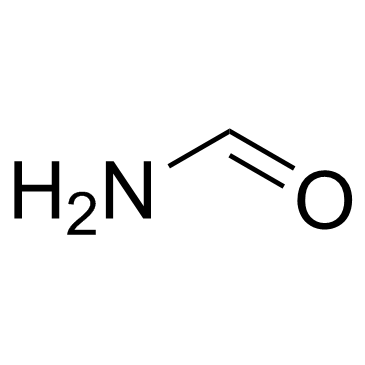Formamide cas number 75-12-7
更新时间:2025-08-21 19:58:26
| 常用名 | 甲酰胺 | CAS号 | 75-12-7 |
|---|---|---|---|
| 价格 | ¥需询单/1kg | 纯度 | 99.0% |
| 备货期 | 需询单 | 库存 | 询单 |
| 产品网页 | https://xcchemico.com/product/formamide/ | ||
| 产品详情(用途,包装等)
Formamide is an organic compound with the molecular formula CH3NO. It is a colorless and transparent liquid with a slight ammonia odor. It is a raw material for the synthesis of pharmaceuticals, fragrances, dyes, etc. It can also be used as a solvent for fiber drawing, plastic processing, and the production of lignin ink. Product Name: Formamide Foreign name: Formamid Alias: Aminoformaldehyde Chemical formula: CH3NO Molecular weight: 45.04 CAS login number: 75-12-7 EINECS login number: 200-842-0 Melting point: 2 to 3 ℃ Boiling point: 210.5 ℃ Water solubility: miscible with water Density: 1.134 g/cm ³ Appearance: Colorless and transparent liquid Flash point: 154.4 ℃ (open cup) Application: Used as spinning solvent and organic synthesis intermediate Security deion: S23; S26;S36/37/39;S45;S53
Hazard symbol: T Hazard deion: R61 Product Usage: Formamide has active reactivity and special solubility, and can be used as an organic synthesis raw material, paper processing agent, softener for fiber industry, softener for animal glue, and also as an analytical reagent for determining the amino acid content in rice. In organic synthesis, it is mostly used in pharmaceuticals, and also has many applications in pesticides, dyes, pigments, fragrances, and additives. Used as an intermediate to synthesize imidazole, pyrimidine, 1,3,5-triazine, caffeine, theanine, and theobromine. Used as raw materials for dyes, fragrances, pigments, adhesives, textile auxiliaries, paper processing agents, etc. Raw materials for producing formic acid, dimethylformamide, etc. It is also an excellent organic solvent, mainly used in the spinning of acrylonitrile copolymers and ion exchange resins, as well as anti-static coating or conductive coating of plastic products. In addition, it is also used for separating chlorosilanes, purifying oils and fats, etc. Formamide can undergo various reactions, including dehydration, CO removal, introduction of amino groups, acyl groups, and cyclization reactions, in addition to involving three hydrogens. 更多
|

